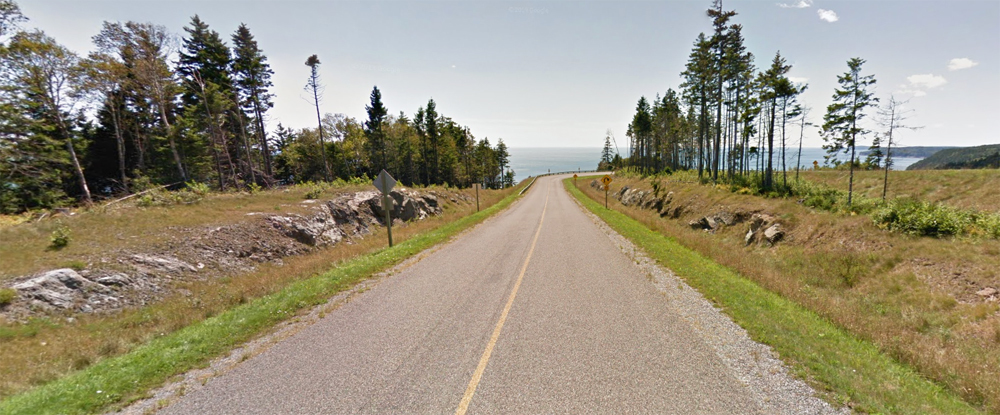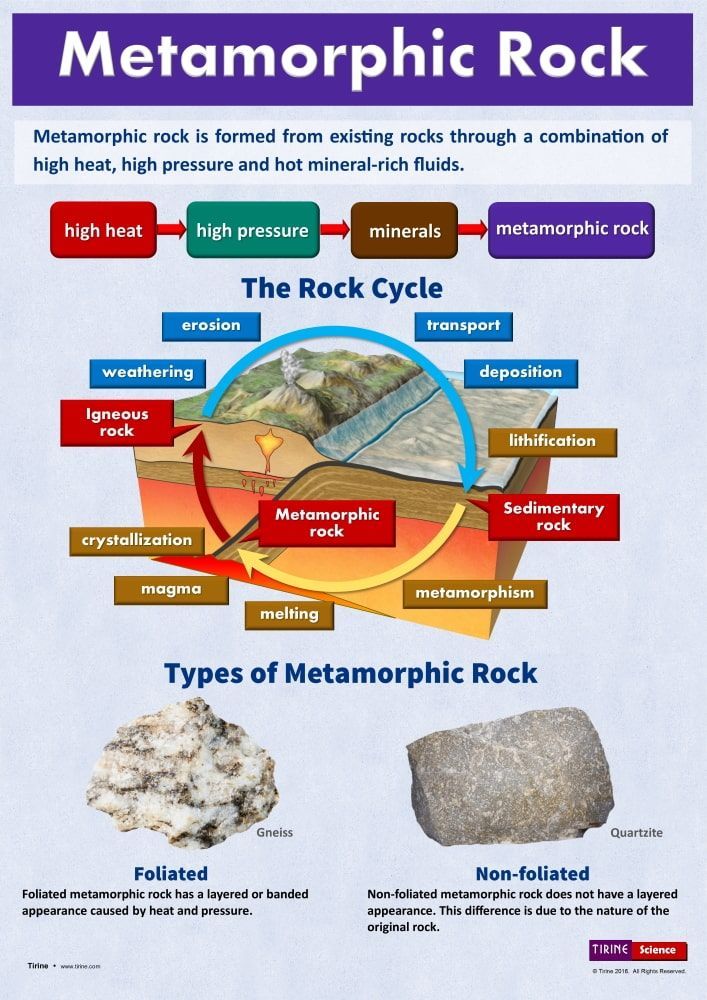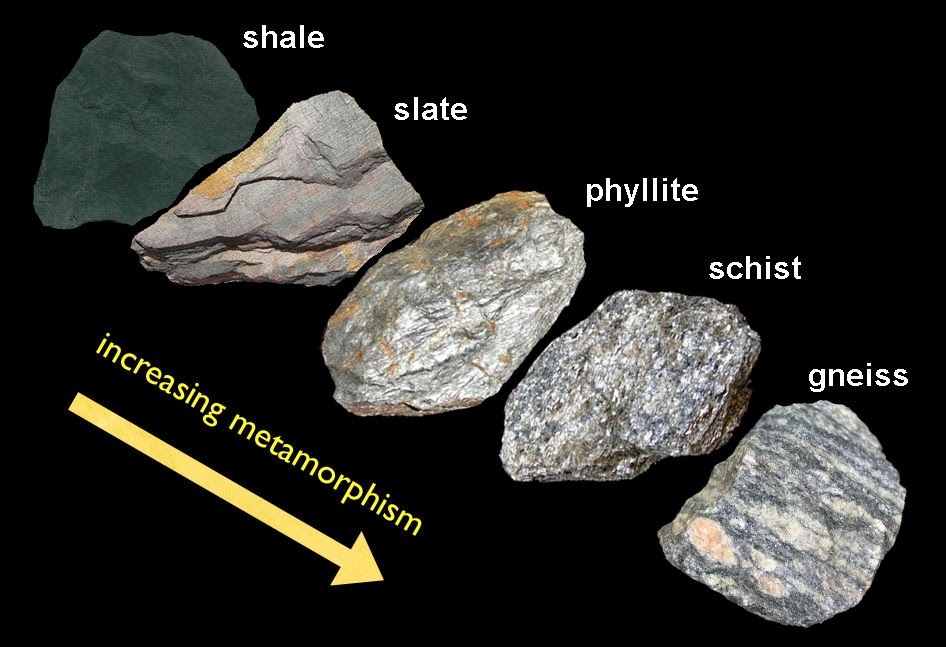To log this earthcache, please don’t stress about answering the questions. Simply send your best attempts in a private message to me, (the cache owner), and then go ahead and log it as found.
You don’t need to wait for my approval. All attempts will be accepted.
Go ahead and have fun learning! 
- [REQUIRED] Please post a photo in your log of yourself or a personal item at the outcrop to prove you visited the site.
- How can you tell this rock is metamorphic?
- How many veins of quartz do you see running through the outcrop?

This site reveals one of the oldest known rocks in New Brunswick, being at least 690 million years old. The outcrop is made up of mafic rock which is a silicate mineral or rock that is rich in magnesium and iron, and is thus a portmanteau of magnesium and ferric. The mafic minerals are dark in color.
What makes this outcrop unique from others in the area?
- Deformation
- Metamorphism
Deformation took place here in a process that affected the shape, size and volume of the rock. The deformation was caused by stress, the scientific term for force applied to a certain area. The stresses on rocks resulted in a permanent change to the shape and size of the rock that persists today even when the stress has stopped. This process is irreversible.

Metamorphism changed this rock from its original form to another. This rock would have started as volcanic rock, then, due to various conditions deep within the Earth, the existing rock was changed into a new kind of metamorphic rock. The conditions required to form this metamorphic rock were very specific. The pre-existing rock was exposed to high heat, high pressure, and hot, mineral-rich fluid. However, the existing rock remained solid and did not melt so there wasn't too much heat or pressure to turn the rock back into magma.
In certain conditions these rocks cooled and crystallized into bands of crystals. Later they became exposed on Earth’s surface. One way to tell if a rock sample is metamorphic is to see if the crystals within it are arranged in bands.

The mafic volcanic rocks here are distincly different from others along the parkway. Fresh surfaces are dark greenish grey, and weathered areas are brown. Due to the deformation and metmorphism, in some places the rock is riddled with white veins and pods of quartz.
Some of the oldest known rocks in New Brunswick are Late Precambrian that were deposited during an early period of ocean opening. These rocks occur near Saint John and hold ancient fossils known as stromatolites, remnants of algal reefs that lived some 980 million years ago.
The outcrop here formed during the Cryogenian persiod, a time of recurring, worldwide glaciation known as Snowball Earth. The Cryogenian Period was the second of three periods of the Neoproterozoic Era of geologic time, extending from approximately 720 million to approximately 635 million years ago. It was during this time that the Snowball Earth hypothesis existed. The Snowball Earth hypothesis proposes that during one or more of Earth's icehouse climates, Earth's surface became entirely or nearly entirely frozen, sometime earlier than 650 million years ago during the Cryogenian period. This makes it one of the oldest known rocks in New Brunswick and one of the oldest, viewable outcrops of this period in New Brunswick.
References:
- National Geographic
- Hickman Hild, M., and Barr, S.M. 2020. Geology New Brunswick & Prince Edward Island: Touring through time at 44 scenic sites. Boulder Publications, NL, 265p.